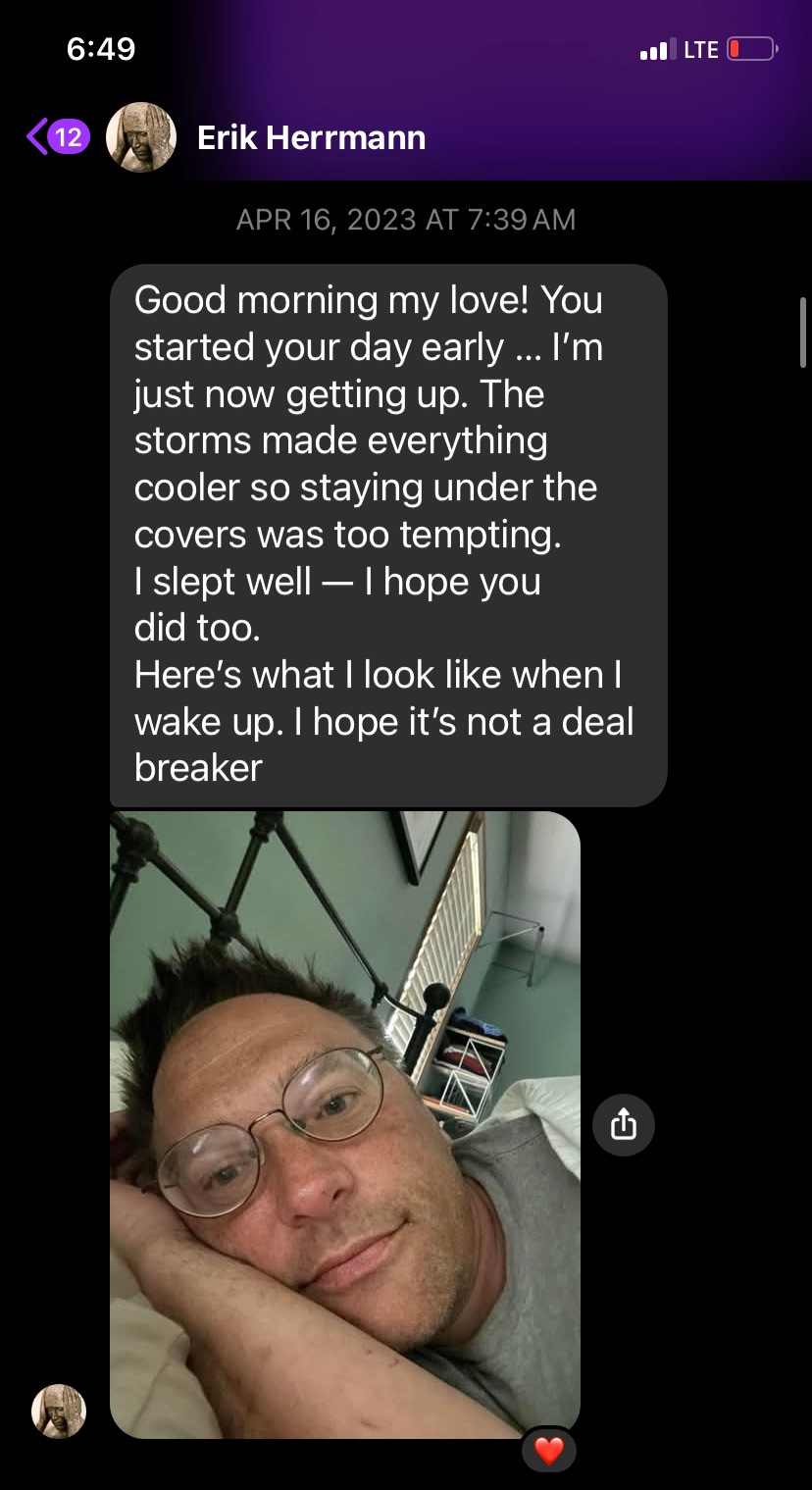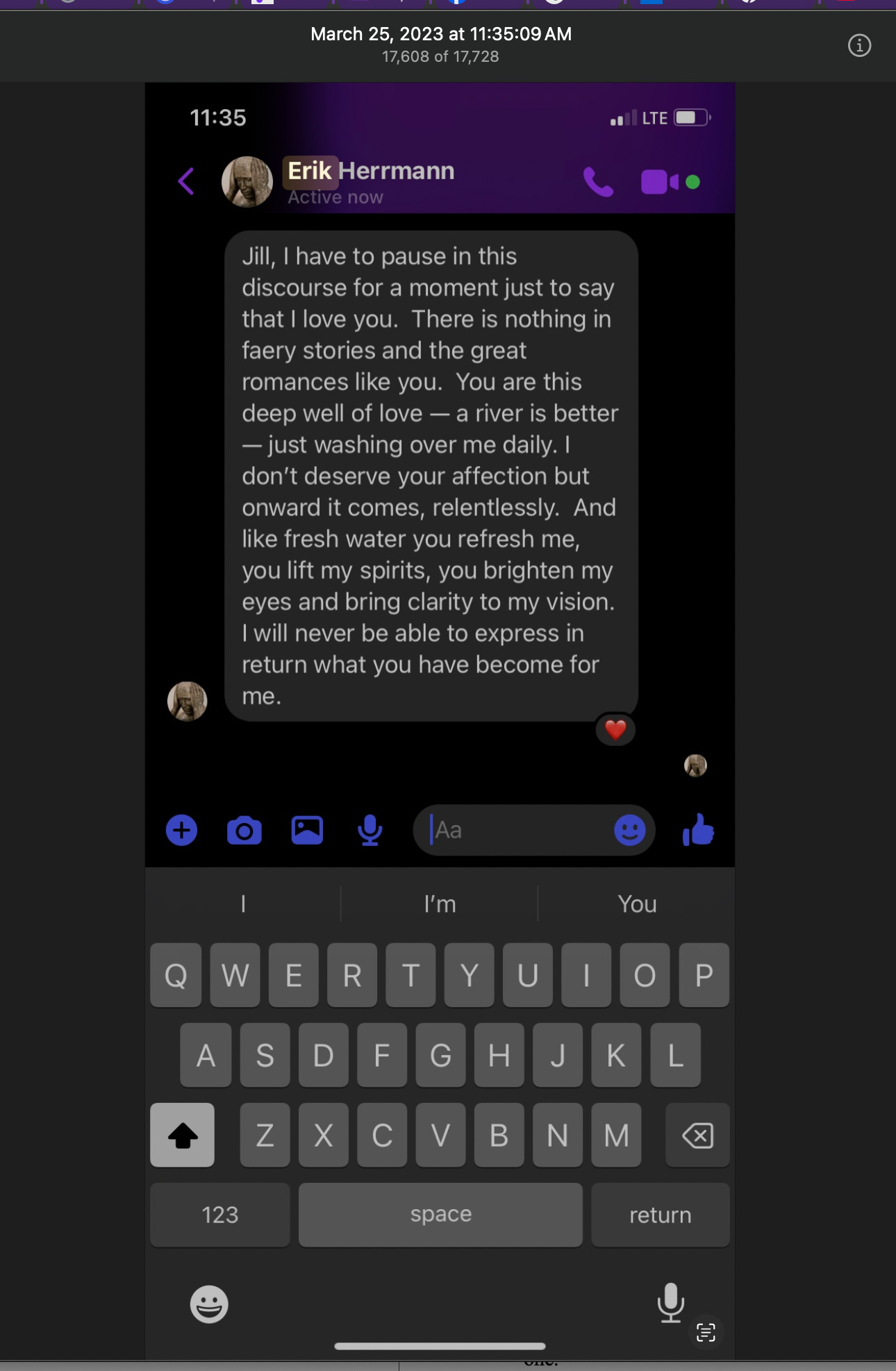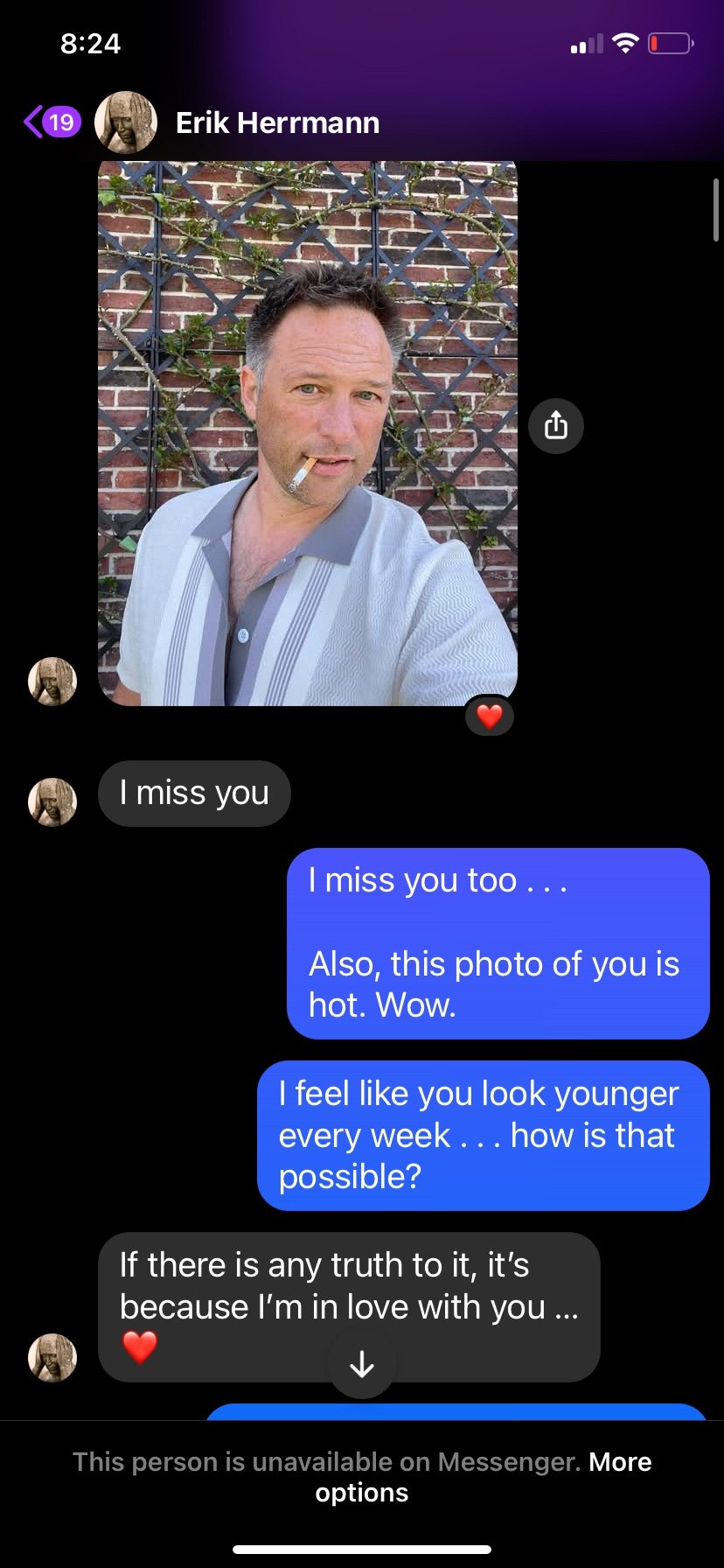For Those Asking for Evidence, This is Where I'll End
The final offering of messages from my relationship with Erik Herrmann—shared for the sake of truth, clarity, and accountability.
Over the past few weeks, I’ve released selected Facebook messages from my relationship with Erik Herrmann, former professor and dean at Concordia Seminary and current Distinguished Professor and Research Fellow at the Institute of Lutheran Theology’s Christ School of Theology.
These posts are an attempt to name what happened clearly and without distortion.
Though Erik resigned from Concordia Seminary in June 2023, there has still been no public statement from Concordia, the LCMS, or ILT acknowledging the real reason for his departure. Erik’s public influence in ministry and theological education continues, most recently, as a speaker at the Best Practices in Ministry conference this past February, 2025.
There is a public silence around what happened. That silence protects Erik’s image. It allows him to remain in a position of authority while leaving the full weight of the aftermath—secrecy, imbalance, emotional and spiritual manipulation—with those impacted. And it places that weight not only on people like me, but also on those still under his leadership.
Since early on in our relationship, Erik has shown a deep instinct for damage control.
When I told him in December 2022 that I had confessed the affair to my pastor, his first instinct wasn’t concern for me, or for what any of it meant spiritually. It was optics. The pastor I spoke to had once been Erik’s student, and their professional circles overlapped. Erik didn’t want his name compromised.
So he went into preservation mode.
I was attending an LCMS church during much of the affair. In December 2022 (two months in), I went to the pastor of that church to confess what was happening and to ask for help in exiting the affair.
When I revealed Erik’s identity, the pastor asked me to invite Erik to speak with him separately. At first, Erik refused, but eventually, he agreed. Later, Erik told me he only met with the pastor in the name of damage control, since the pastor had once been his student and their professional circles overlapped in ways Erik found risky.
The pastor began counseling Erik weekly. During a short pause in the affair, the pastor was meeting with both Erik and me, separately. Eventually, I stopped meeting with the pastor because I no longer trusted the dynamic. Once Erik completed his sessions with the pastor, the affair resumed.
After the affair was revealed, I met with that pastor one final time. He told me that he had “forced” Erik to tell his wife about us. I responded with skepticism: “Unless you were in the room, there’s no way that happened.” The pastor replied, “I told him to have her call me after he confessed.” At that point, the pastor also began counseling Erik’s wife.
As I mentioned above, Erik only met with that pastor to contain the damage. He monitored what I said, and to whom. He tried to manage the narrative behind closed doors, offering only what he believed couldn’t hurt him.
That same instinct surfaced again when my husband confronted him. In the span of a single conversation, Erik shifted from whispering future plans and "I love you" to denying our relationship and throwing me under the bus completely. What he’d once framed as devotion became a liability, and he distanced himself from me immediately.
It surfaced again when he chose to resign from Concordia Seminary rather than face the investigative team that had already been assembled by Missouri District President Lee Hagan after I submitted my complaint of sexual misconduct. Erik walked away before accountability could be enforced, then went silent.
That pattern didn’t stop when our relationship ended. It continues today. Erik is actively attempting to control the damage.
I’ve tried to navigate all of this with care, not only for myself, but for everyone else involved, including Erik’s wife and children. I don’t share anything gratuitously. I’ve shared just enough to make the point that truth matters.
I had originally planned to place the second half of this post behind the paywall. But this time, I’m choosing to prioritize the people it might help: other women who are currently facing what I once did, and pastors who would never commit such harm but need to understand what it looks like when it happens in their communities.
This will be my final offering of evidence.
Not because I’ve run out—there are thousands of messages, photos, and audio files I could share. But because I’ve shared enough.
And because it’s time to let go of the responsibility I’ve carried for making this known.
These excerpts are not the most salacious or shocking. They’re representative. They show what was hidden beneath Erik’s public persona. They show a story that was real, even if it was always temporary.
A Note to Anyone Who Sees Themselves in This Story
You can open the door to sin and make terrible choices, and also be harmed.
That paradox is hard to hold, especially when it’s easier to reduce the story to heroes and villains. But spiritual abuse often happens in the gray spaces between power and affection, intimacy and control.
If you’ve experienced something similar, I hope this reminds you: your story matters. What happened to you is not invalid just because you consented to it at the time. If someone with spiritual or emotional authority used that position to manipulate you, that’s abuse. Even if you loved them. Even if you thought it was mutual.
A Final Note About Evidence
This will be the last time I share direct messages from Erik Herrmann. Not because the story ends here, but because I have reached the end of what I’m willing to revisit.
For the first two evidence posts, I asked a trusted third party to pull the messages on my behalf. It was a protective measure—one that allowed me to stay grounded while still telling the truth. But this time, I knew I needed to do it myself. I needed to return to those messages and face them with clear eyes, not just to share them, but to reclaim what happened.
What followed was not a step backward in my healing, praise God.
But it was hard.
I had a panic attack. I experienced dissociation. My heart raced for two days straight. Even typing this now, I can’t stop shaking, and I had to put in my bite guard, which helps when my jaw clenches uncontrollably. This is what trauma does. It doesn’t politely ask if you’re ready. It barges in with physical memories and nervous system spirals that remind you: this is how much it cost you the first time.
The PTSD I carry from my relationship with Erik—and everything that followed—is nothing I would wish on my worst enemy.
As Bessel van der Kolk writes in The Body Keeps the Score:
“Trauma is not just an event that took place in the past; it is also the imprint left by that experience on mind, brain, and body.”
And:
“Being able to feel safe with other people is probably the single most important aspect of mental health.”
The more I’ve told the truth, the safer I’ve felt. Not because everyone has responded with support, but because I have stopped hiding.
Telling the truth won’t erase the trauma. But it restores agency. It unhooks you from the lie that you have to protect the person who harmed you. And it lets the body breathe again.
Thank you for walking with me this far.
Update (April 27, 2025):
In light of recent accusations that I fabricated or exaggerated evidence, I am adding one additional screenshot below.
This excerpt comes directly from private messages exchanged during my relationship with Erik Herrmann. It further documents the intimacy of the relationship and supports the accuracy of the evidence already presented above.









